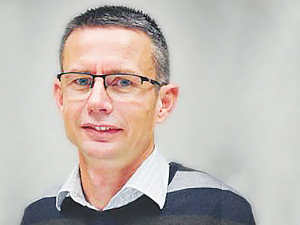New genetic tool for beef farmers
Beef + Lamb New Zealand (B+LNZ) has launched a powerful new tool to help commercial beef farmers select the best bulls for their farm businesses.
 Dan Brier says breeding low-methane genetics is part of Beef + Lamb New Zealand’s Cool Sheep programme.
Dan Brier says breeding low-methane genetics is part of Beef + Lamb New Zealand’s Cool Sheep programme.
OPINION: More than 100 farmers, rural professionals and international researchers recently took part in a webinar about breeding toward low-methane genetics as part of Beef + Lamb New Zealand’s Cool Sheep programme.
The project, funded by the Ministry for Primary Industries (MPI) and supported by B+LNZ and AgResearch, is a world-first project. It aims to give every sheep farmer in New Zealand the opportunity to use genetic selection to reduce greenhouse gas emissions for our national flock.
Led by senior scientist at AgResearch Dr Suzanne Rowe and Dr Jason Archer, Genetics Specialist - Livestock for B+LNZ Genetics, the webinar reflected the significant interest in the programme, both among New Zealand farmers and globally. In addition to the insights about low methane genetics, farmers also learnt more about using the nProve tool to access genetic information for their farm business.
Ultimately, the goal is to provide farmers with the tools they are seeking to support them to adapt to these changing global expectations. It is accelerating the identification of low methane farms in the breeding sector to increase the supply of rams to lower sheep methane in the national flock.
Despite participation in this programme being voluntary, the response from many farmers has been enthusiastic. We are over-subscribed with farmers who want to use the portable accumulation chambers (PACs) to measure the methane emissions from their animals.
However, we also recognise there may be confusion among some farmers about the programme or misconceptions that other beneficial traits could be compromised for low methane.
On the webinar, Rowe and Archer dispelled several of the myths that have been circulating about low methane sheep.
Rowe presented both peer-reviewed and new science to help farmers understand what the impact of using low methane rams on their farms could be.
Farmers and other attendees had the opportunity to ask questions of the science team on the webinar. A number of those were about methane measurement metrics and policy, outside the scope of the Cool Sheep Programme. Rowe made the telling analogy that discussing the methane metrics in this context was like talking about whether to measure a car’s speed by comparing fuel. A faster car is faster and a lower methane sheep produces less methane – whatever the metric.
Archer described and answered questions on the Cool Sheep Programme’s environmental selection index. This will allow farmers to select for low methane producing sheep as part of a balance breeding programme. Some farmers have described selecting only for low methane, but Beef + Lamb New Zealand Genetics and most geneticists do not recommend that.
We learnt that low methane sheep are leaner and have a slightly different fatty acid profile in their milk and fat. They have less carcase fat and an improved dressing out percentage, while high methane sheep have slightly higher Body Condition Scores (BCS). Lower methane sheep grow more wool and low methane sheep were also shown to have larger intakes than high methane animals.
The difference in methane emissions within a flock between low and high methane sheep has also been found to remain consistent regardless of diet, region or weather. The ranking of animals stay the same.
Sheep bred for low methane emissions as part of selection lines are also proving to perform economically better than sheep bred for high methane emissions. When compared using the New Zealand Maternal Worth (NZMW) index, the low methane selection line is around $12 more profitable than the high selection line.
As more breeding flocks are measured for methane, B+LNZ Genetics and AgResearch will continue to monitor the impacts on commercial breeding flocks.
Dan Brier is general manager of Beef + Lamb New Zealand Genetics
The National Wild Goat Hunting Competition has removed 33,418 wild goats over the past three years.
New Zealand needs a new healthcare model to address rising rates of obesity in rural communities, with the current system leaving many patients unable to access effective treatment or long-term support, warn GPs.
Southland farmers are being urged to put safety first, following a spike in tip offs about risky handling of wind-damaged trees
Third-generation Ashburton dairy farmers TJ and Mark Stewart are no strangers to adapting and evolving.
When American retail giant Cosco came to audit Open Country Dairy’s new butter plant at the Waharoa site and give the green light to supply their American stores, they allowed themselves a week for the exercise.
Fonterra chair Peter McBride says the divestment of Mainland Group is their last significant asset sale and signals the end of structural changes.

OPINION: Your old mate welcomes the proposed changes to local government but notes it drew responses that ranged from the reasonable…
OPINION: A press release from the oxygen thieves running the hot air symposium on climate change, known as COP30, grabbed your…